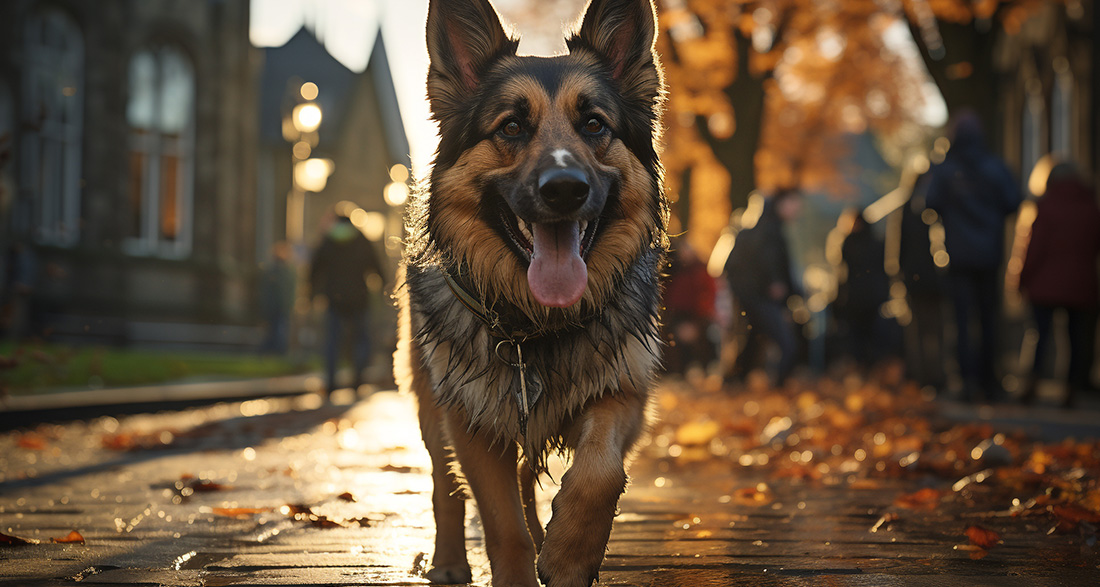“Dogs that bark don’t bite” or “when the tail wags, the dog is happy” – true or false? We’ve examined dog myths, picked out the top five myths for you, and explain what is true and what is false.
Dog Myth 1: Dogs that bark don’t bite
False. You’ve probably heard the saying many times. When someone aggressively announces their intention to cause harm but doesn’t follow through, people often say, “Dogs that bark don’t bite.” However, a dog’s barking can indeed express aggression. Often, barking is the last warning before a looming attack and bite. But dogs also bark to seek attention, make contact, or greet someone. It depends on the pitch and speed of the barking, as well as the situation.
Dog Myth 2: If the tail wags, the dog is happy
False. When a dog wags its tail, it only means that it is excited. This can be the case when it’s happy, but also when the dog is in a conflict. Even if the dog is fearful, it may wag its tail. It’s crucial to pay attention to the dog’s overall body language.
Dog Myth 3: Dogs have no sense of time
False. Dogs just don’t orient themselves by watches like we humans do. But that doesn’t mean they have no sense of time. Dogs follow a daily routine: the sun rises in the morning, and it sets in the evening. In between, there’s regular exercise and meals. This creates expectations and memories for dogs. And that’s what gives dogs a sense of time.
However, it’s not as precise as in humans who watch the clock down to the minute or even the second. Dogs adapt to certain recurring events. If an expected event doesn’t happen or is delayed (such as the shift from winter to daylight saving time), the dog will notice that something is taking longer than usual. Perhaps you’ve experienced your dog impatiently reminding you to feed them because it’s taking too long!
Dog Myth 4: Dogs and cats are natural enemies
False. They are not natural enemies. There are just many differences that complicate communication between them. When a dog and a cat meet for the first time, they may send each other confusing signals: the cat raises its paw, meaning “stay away from me.” The dog, however, interprets it as a warm greeting, an invitation to play, or a begging gesture. And if the dog cheerfully wags its tail, the cat sees it as a threat. After a few misunderstandings, these differences can be overcome, and nothing stands in the way of their friendship.
Dog Myth 5: Dogs feel guilty
False. You come home, and your dog has shredded a sofa cushion. Feathers are scattered everywhere, and your furry friend innocently lies in its bed. Clearly, the cushion didn’t shred itself. You get upset and scold. The dog looks extremely guilty and caught. However, that doesn’t mean it’s aware of its guilt. The connection to the misdeed is long lost. Rather, dogs have a keen sense of human moods. When the owner is angry, they react appeasingly. Owners often interpret this as an admission of guilt.


